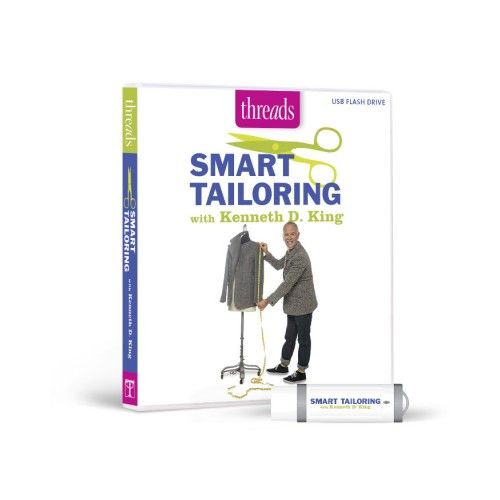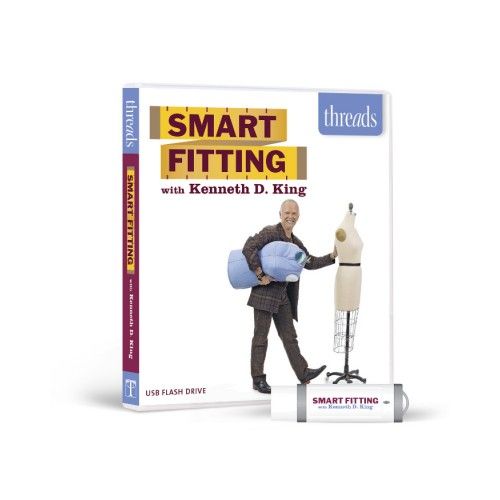Hi, I’m looking for advice on sewing a semi fitted jacket out of silk tweed. I’m thinking about lining the jacket using Connie Long’s quick lining techique. Will this techique provide enough support to keep the tweed from bagging and stretching? Or, should I bag line my jacket and interface the tweed with fusi-knit?
Any advice is greatly appreciated! Thank you.




























Replies
Hi,
I just purchased the book, Jackets for Real People (I think that's the title) from Amazon at a very good price, and it has all kinds of really great information; I have also purchased the two other books these authors have published about fit; very good advice, I think.
I am very sold on underlining, although I sometimes don't use a fusible; I make some techniques up as I go along just because I am somewhat of a maverick, but I've been sewing for a long while, although I don't sew really high end clothing, but I did make most of the dressier clothes I used to wear to work.
I underlined a jacket that was this inexpensive suede-like material with lining material and it slipped on and looked very nice. I just don't do linings that much because I have a serger that I can finish seams with very nicely.
Oh, I did make a silk short suit that was very dressy, and I used a very thin iron-on interfacing, but that is a tedious job, to press all that interfacing; the books recommend applying the interfacing to the material before cutting out the jacket. Because the jacket wasn't lined, I lined the sleeves and hand sewed them in, so that the jacket was easier to put on.
Hope this helps............
There was a very good article in Vogue sewing by Claire schaffer about this and she actually stitches an underlining to the shell fabric at the seam allowance . I dont have the article with me so i cant refer to it exactly. I also have used a quilting method with tweed and while alot of work it is very effective . The article in a recent Threads about making a Chanel jacket was my main referrence for that. Silk tweed is very heavy and I think the it would be very wise to mount it on an interlining and then line it is whatever way you want.
just to add to my other post there is a pattern just out in Claire schaffers series for Vogue which gives a really good description of how to attach the underlining . It is a gelati coloured tweed jacket with a stand up mandarin collar and a 3 piece sleeve and trimmed with cream braid . No where is the name Chanel mentioned but that is probably for legal reasons . I bought the pattern not so much for the actual jacket but for the method she describes . Very good and usable on almost any jacket pattern made with tweed .
I too recently purchased this pattern. And, I want to not only make the jacket (someday), but I love reading the instructions that Claire provides with her patterns. They are applicable in garments other than those that she designs.
I would underline the jacket with a china silk and then line it. I'm not sure what methods of inserting the lining you are talking about, but I don't think that matters. The underlining will support the silk tweed and keep it from streching out of shape
A nice, inexpensive, batiste also makes a good underlining for clothing. And, if it's 100% cotton, you can count on it breathing versus polyester. I found that Hancock Fabric store in my area (Ohio-Miami Valley area) carries this at a most reasonable price. Just be sure to preshrink it before cutting.
I'll have to look at the batiste at Hancocks,but most cotton batiste I've seen (really nice stuff) cost more than the china silk - which is 100% silk not poly.
This is not the case with the batiste that I found at our Hancock Fabric Store. Maybe a phone call will save you the drive to the store.
You have to be careful at Hancock's - sometimes what they call "batiste" is not all cotton, but a poly-cotton blend, which is not nearly as light and fine as the all-cotton.
Hi Lauri,
In Anna Zapp's book, she uses a fusible tricot and also a lining. She said the tricot makes the material a little more sturdy and she does apply it before she cuts out the material. Incidently, she was making a vest in her book.
Marcy
Thank you all for sharing your expertise. I appreciate hearing from each of you. I'm going to try making samples using each suggestion and decide which one works for my fabric. Thanks again, you guys rock!
Making samples of each underlining and each technique is a very good idea. You can't go wrong when you take the time to test everything
Please let us know which underlining you decided to use and how it worked out.
I would underline this fabric first, either with silk organza or with iron on as I seem to remember that it doesn't hold its shape well.
Jane, this discussion might help you with your silk tweed, or it may not, read it anyway you never know. Cherrypops
This post is archived.